🍂🍁🎃📚📓
🍂🍁🎃📚📓

More Posts from Monstrous-mind and Others
🔭🌃🌌
Cosmic Alphabet Soup: Classifying Stars

If you’ve spent much time stargazing, you may have noticed that while most stars look white, some are reddish or bluish. Their colors are more than just pretty – they tell us how hot the stars are. Studying their light in greater detail can tell us even more about what they’re like, including whether they have planets. Two women, Williamina Fleming and Annie Jump Cannon, created the system for classifying stars that we use today, and we’re building on their work to map out the universe.

By splitting starlight into spectra – detailed color patterns that often feature lots of dark lines – using a prism, astronomers can figure out a star’s temperature, how long it will burn, how massive it is, and even how big its habitable zone is. Our Sun’s spectrum looks like this:

Astronomers use spectra to categorize stars. Starting at the hottest and most massive, the star classes are O, B, A, F, G (like our Sun), K, M. Sounds like cosmic alphabet soup! But the letters aren’t just random – they largely stem from the work of two famous female astronomers.

Williamina Fleming, who worked as one of the famous “human computers” at the Harvard College Observatory starting in 1879, came up with a way to classify stars into 17 different types (categorized alphabetically A-Q) based on how strong the dark lines in their spectra were. She eventually classified more than 10,000 stars and discovered hundreds of cosmic objects!

That was back before they knew what caused the dark lines in spectra. Soon astronomers discovered that they’re linked to a star’s temperature. Using this newfound knowledge, Annie Jump Cannon – one of Fleming’s protégés – rearranged and simplified stellar classification to include just seven categories (O, B, A, F, G, K, M), ordered from highest to lowest temperature. She also classified more than 350,000 stars!

Type O stars are both the hottest and most massive in the new classification system. These giants can be a thousand times bigger than the Sun! Their lifespans are also around 1,000 times shorter than our Sun’s. They burn through their fuel so fast that they only live for around 10 million years. That’s part of the reason they only make up a tiny fraction of all the stars in the galaxy – they don’t stick around for very long.

As we move down the list from O to M, stars become progressively smaller, cooler, redder, and more common. Their habitable zones also shrink because the stars aren’t putting out as much energy. The plus side is that the tiniest stars can live for a really long time – around 100 billion years – because they burn through their fuel so slowly.

Astronomers can also learn about exoplanets – worlds that orbit other stars – by studying starlight. When a planet crosses in front of its host star, different kinds of molecules in the planet’s atmosphere absorb certain wavelengths of light.
By spreading the star’s light into a spectrum, astronomers can see which wavelengths have been absorbed to determine the exoplanet atmosphere’s chemical makeup. Our James Webb Space Telescope will use this method to try to find and study atmospheres around Earth-sized exoplanets – something that has never been done before.

Our upcoming Nancy Grace Roman Space Telescope will study the spectra from entire galaxies to build a 3D map of the cosmos. As light travels through our expanding universe, it stretches and its spectral lines shift toward longer, redder wavelengths. The longer light travels before reaching us, the redder it becomes. Roman will be able to see so far back that we could glimpse some of the first stars and galaxies that ever formed.
Learn more about how Roman will study the cosmos in our other posts:
Roman’s Family Portrait of Millions of Galaxies
New Rose-Colored Glasses for Roman
How Gravity Warps Light
Make sure to follow us on Tumblr for your regular dose of space!
🔭🌃🌌🐈🍂🍁

First Ever Image of a Multi-Planet System around a Sun-like Star Captured by ESO Telescope
The European Southern Observatory’s Very Large Telescope (ESO’s VLT) has taken the first ever image of a young, Sun-like star accompanied by two giant exoplanets. Images of systems with multiple exoplanets are extremely rare, and — until now — astronomers had never directly observed more than one planet orbiting a star similar to the Sun. The observations can help astronomers understand how planets formed and evolved around our own Sun.
The two gas giants orbit their host star at distances of 160 and about 320 times the Earth-Sun distance. This places these planets much further away from their star than Jupiter or Saturn, also two gas giants, are from the Sun; they lie at only 5 and 10 times the Earth-Sun distance, respectively. The team also found the two exoplanets are much heavier than the ones in our Solar System, the inner planet having 14 times Jupiter’s mass and the outer one six times.
Source
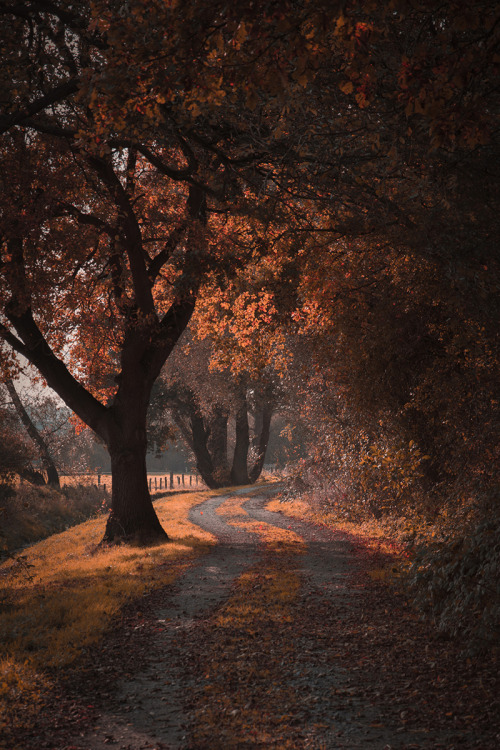
Back to the Autumn | Alex Kaßner

The NASA/ESA Hubble Space Telescope captures the iridescent tapestry of star birth in a neighbouring galaxy in this panoramic view of glowing gas, dark dust clouds, and young, hot stars.
Credit: NASA/ESA and the Hubble Heritage Team (AURA/STScI/HEIC)
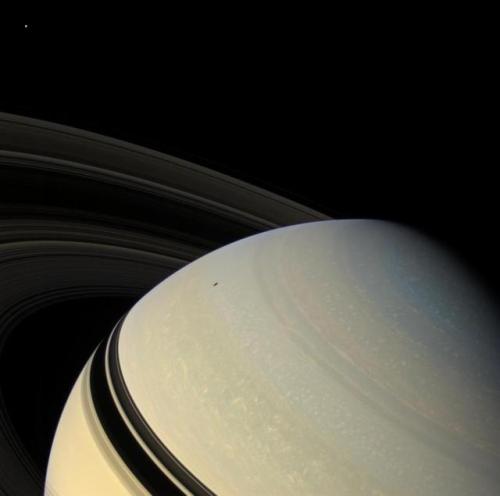
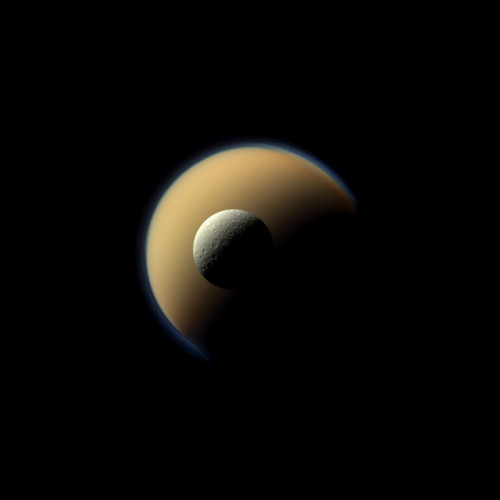
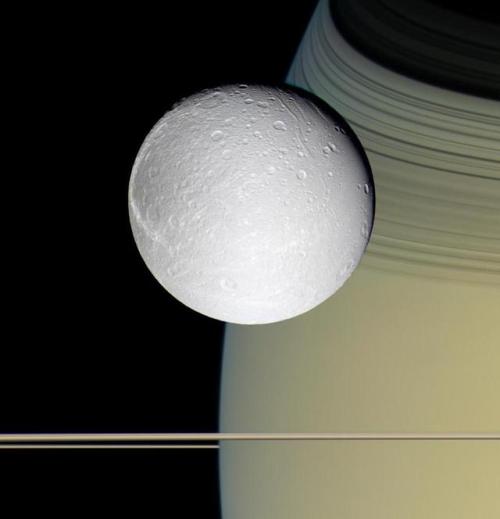
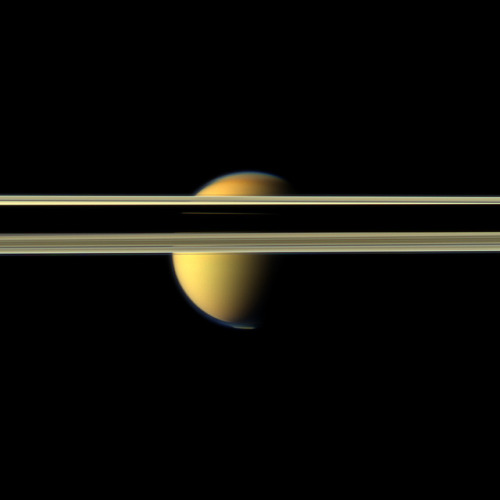
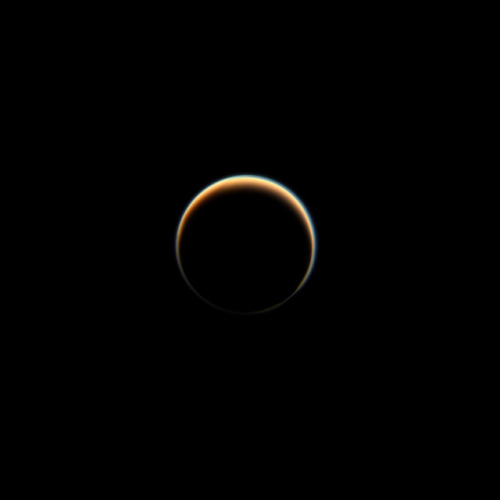
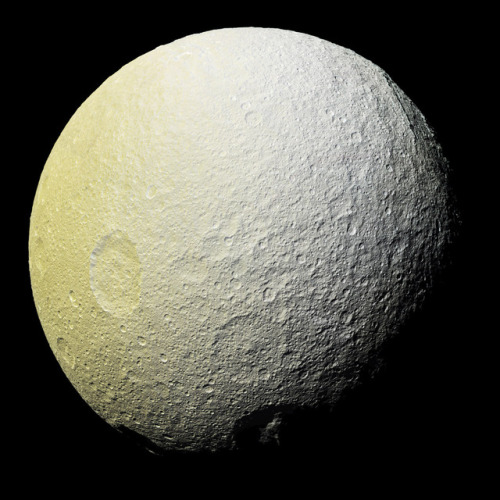
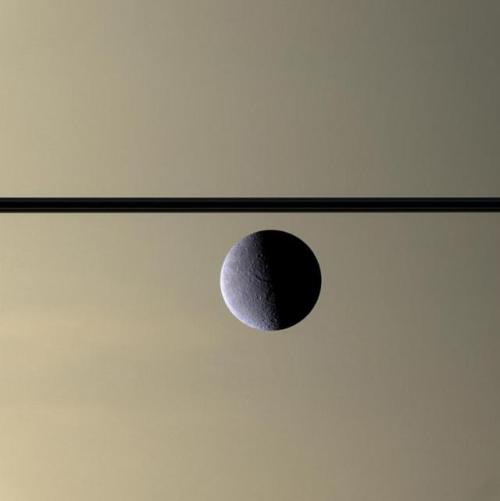

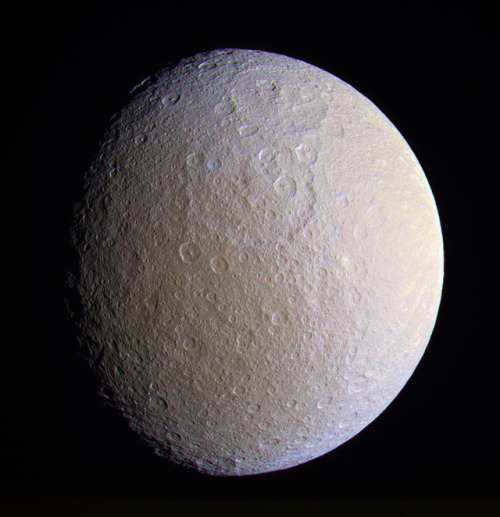
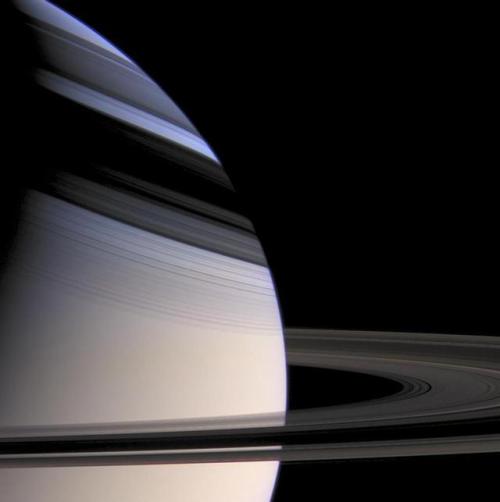
Saturn and its moons
Image credit: NASA/JPL-Caltech
🍂🍁💀


Be Glad You Don’t Have to Dust in Space!
Throw open the windows and break out the feather duster, because spring is here and it’s time to do a little cleaning! Fortunately, no one has to tidy up the dust in space — because there’s a lot of it — around 100 tons rain down on Earth alone every day! And there’s even more swirling around the solar system, our Milky Way galaxy, other galaxies and the spaces in between.

By studying the contents of the dust in your house — which can include skin cells, pet fur, furniture fibers, pollen, concrete particles and more — scientists learn a lot about your environment. In the same way, scientists can learn a lot by looking at space dust. Also called cosmic dust, a fleck of space dust is usually smaller than a grain of sand and is made of rock, ice, minerals or organic compounds. Scientists can study cosmic dust to learn about how it formed and how the universe recycles material.

“We are made of star-stuff,” Carl Sagan famously said. And it’s true! When a star dies, it sheds clouds of gas in strong stellar winds or in an explosion called a supernova. As the gas cools, minerals condense. Recent observations by our SOFIA mission suggest that in the wake of a supernova shockwave, dust may form more rapidly than scientists previously thought. These clouds of gas and dust created by the deaths of stars can sprawl across light-years and form new stars — like the Horsehead Nebula pictured above. Disks of dust and gas form around new stars and produce planets, moons, asteroids and comets. Here on Earth, some of that space dust eventually became included in living organisms — like us! Billions of years from now, our Sun will die too. The gas and dust it sheds will be recycled into new stars and planets and so on and so forth, in perpetuity!

Astronomers originally thought dust was a nuisance that got in the way of seeing the objects it surrounded. Dust scatters and absorbs light from stars and emits heat as infrared light. Once we started using infrared telescopes, we began to understand just how important dust is in the universe and how beautiful it can be. The picture of the Andromeda galaxy above was taken in the infrared by our Spitzer Space Telescope and reveals detailed spirals of dust that we can’t see in an optical image.

We also see plenty of dust right here in our solar system. Saturn’s rings are made of mostly ice particles and some dust, but scientists think that dust from meteorites may be darkening the rings over time. Jupiter also has faint dusty rings, although they’re hard to see — Voyager 1 only discovered them when it saw them backlit by the Sun. Astronomers think the rings formed when meteorite impacts on Jupiter’s moons released dust into orbit. The Juno spacecraft took the above picture in 2016 from inside the rings, looking out at the bright star Betelgeuse.

Copyright Josh Calcino, used with permission
And some space dust you can see from right here on Earth! In spring or autumn, right before sunrise or after sunset, you may be able to catch a glimpse of a hazy cone of light above the horizon created when the Sun’s rays are scattered by dust in the inner solar system. You can see an example in the image above, extending from above the tree on the horizon toward a spectacular view of the Milky Way. This phenomenon is called zodiacal light — and the dust that’s reflecting the sunlight probably comes from icy comets. Those comets were created by the same dusty disk that that formed our planets and eventually you and the dust under your couch!
Make sure to follow us on Tumblr for your regular dose of space: http://nasa.tumblr.com
📚📖🍁🍂🌌☕🎃

By Khanh Do
🌄🍁🍂🌫🎃

-
 delightfuldaydreaming liked this · 1 month ago
delightfuldaydreaming liked this · 1 month ago -
 miamaliwanag reblogged this · 2 months ago
miamaliwanag reblogged this · 2 months ago -
 wallsarecrumbling reblogged this · 2 months ago
wallsarecrumbling reblogged this · 2 months ago -
 in-a-tucked-away-space liked this · 3 months ago
in-a-tucked-away-space liked this · 3 months ago -
 ephemeral-dream reblogged this · 3 months ago
ephemeral-dream reblogged this · 3 months ago -
 choupizard liked this · 4 months ago
choupizard liked this · 4 months ago -
 redlightsandicedtea reblogged this · 4 months ago
redlightsandicedtea reblogged this · 4 months ago -
 redlightsandicedtea liked this · 4 months ago
redlightsandicedtea liked this · 4 months ago -
 goatseyeview222 liked this · 4 months ago
goatseyeview222 liked this · 4 months ago -
 justacountyboy liked this · 4 months ago
justacountyboy liked this · 4 months ago -
 autumnic reblogged this · 4 months ago
autumnic reblogged this · 4 months ago -
 tthisismyworld liked this · 4 months ago
tthisismyworld liked this · 4 months ago -
 fortheequinox reblogged this · 4 months ago
fortheequinox reblogged this · 4 months ago -
 regenflocke reblogged this · 6 months ago
regenflocke reblogged this · 6 months ago -
 notperfect-justme reblogged this · 6 months ago
notperfect-justme reblogged this · 6 months ago -
 annita89n0mf78lh liked this · 6 months ago
annita89n0mf78lh liked this · 6 months ago -
 hyperikone liked this · 6 months ago
hyperikone liked this · 6 months ago -
 urbanhippiee reblogged this · 6 months ago
urbanhippiee reblogged this · 6 months ago -
 flawedmasterpiece13 liked this · 7 months ago
flawedmasterpiece13 liked this · 7 months ago -
 shy-and-reserved reblogged this · 7 months ago
shy-and-reserved reblogged this · 7 months ago -
 cozylittlebookshop reblogged this · 7 months ago
cozylittlebookshop reblogged this · 7 months ago -
 marshall-lee42 liked this · 7 months ago
marshall-lee42 liked this · 7 months ago -
 korrasami-did-the-thing reblogged this · 7 months ago
korrasami-did-the-thing reblogged this · 7 months ago -
 korrasami-did-the-thing liked this · 7 months ago
korrasami-did-the-thing liked this · 7 months ago -
 squeakowl reblogged this · 7 months ago
squeakowl reblogged this · 7 months ago -
 sleepy-alchemist liked this · 7 months ago
sleepy-alchemist liked this · 7 months ago -
 gentleman1977 reblogged this · 7 months ago
gentleman1977 reblogged this · 7 months ago -
 the-sun-will-rise-again-25 liked this · 7 months ago
the-sun-will-rise-again-25 liked this · 7 months ago -
 mystic-mead0w reblogged this · 7 months ago
mystic-mead0w reblogged this · 7 months ago -
 p-oop reblogged this · 7 months ago
p-oop reblogged this · 7 months ago -
 paulisophia liked this · 7 months ago
paulisophia liked this · 7 months ago -
 buffsea reblogged this · 9 months ago
buffsea reblogged this · 9 months ago -
 dreamingthroughthenoise reblogged this · 9 months ago
dreamingthroughthenoise reblogged this · 9 months ago -
 fogandfireflies liked this · 9 months ago
fogandfireflies liked this · 9 months ago -
 arainyautumnnight reblogged this · 9 months ago
arainyautumnnight reblogged this · 9 months ago -
 fluffywolf86 reblogged this · 10 months ago
fluffywolf86 reblogged this · 10 months ago -
 waypastdue liked this · 11 months ago
waypastdue liked this · 11 months ago -
 ode-to-an-inkwell reblogged this · 11 months ago
ode-to-an-inkwell reblogged this · 11 months ago -
 this-is-ali liked this · 11 months ago
this-is-ali liked this · 11 months ago -
 f0ur-elements reblogged this · 11 months ago
f0ur-elements reblogged this · 11 months ago -
 notthisvirgin liked this · 11 months ago
notthisvirgin liked this · 11 months ago -
 ghostwthemost liked this · 11 months ago
ghostwthemost liked this · 11 months ago -
 wearestardust liked this · 11 months ago
wearestardust liked this · 11 months ago -
 lighting-up-the-embers reblogged this · 11 months ago
lighting-up-the-embers reblogged this · 11 months ago -
 littlelolittleill liked this · 11 months ago
littlelolittleill liked this · 11 months ago -
 buffsea liked this · 11 months ago
buffsea liked this · 11 months ago -
 that-emo-sexyman liked this · 11 months ago
that-emo-sexyman liked this · 11 months ago
My ambition is handicapped by laziness. -C. Bukowski Me gustan las personas desesperadas con mentes rotas y destinos rotos. Están llenos de sorpresas y explosiones. -C. Bukowski. I love cats. Born in the early 80's, raised in the 90's. I like Nature, Autumn, books, landscapes, cold days, cloudy Windy days, space, Science, Paleontology, Biology, Astronomy, History, Social Sciences, Drawing, spending the night watching at the stars, Rick & Morty. I'm a lazy ass.
222 posts